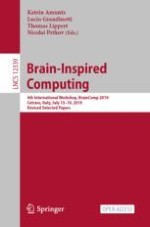1 Introduction
2 Materials and Methods
2.1 Histology
2.2 Manual Analysis and Reference Mapping of Histological Sections
2.3 Training of the Deep-Learning Algorithm to Predict Missing Delineations
3 Results
3.1 Cytoarchitectonic Mapping Based on Expert Annotations and Deep Learning
3.2 High-Resolution 3D Reconstruction
3.3 Volumes of Layers
LGB | Left [mm3] | Right [mm3] |
|---|---|---|
Layer 1 | 10.2 | 7.8 |
Layer 2 | 8.3 | 7.4 |
Layer 3 | 28.5 | 27.4 |
Layer 4 | 25.9 | 21.3 |
Layer 5 | 20.2 | 21.8 |
Layer 6 | 27.4 | 27.5 |
Σ of layers 1–6 | 120.5 | 113.2 |
Total | 141.2 | 132.2 |
